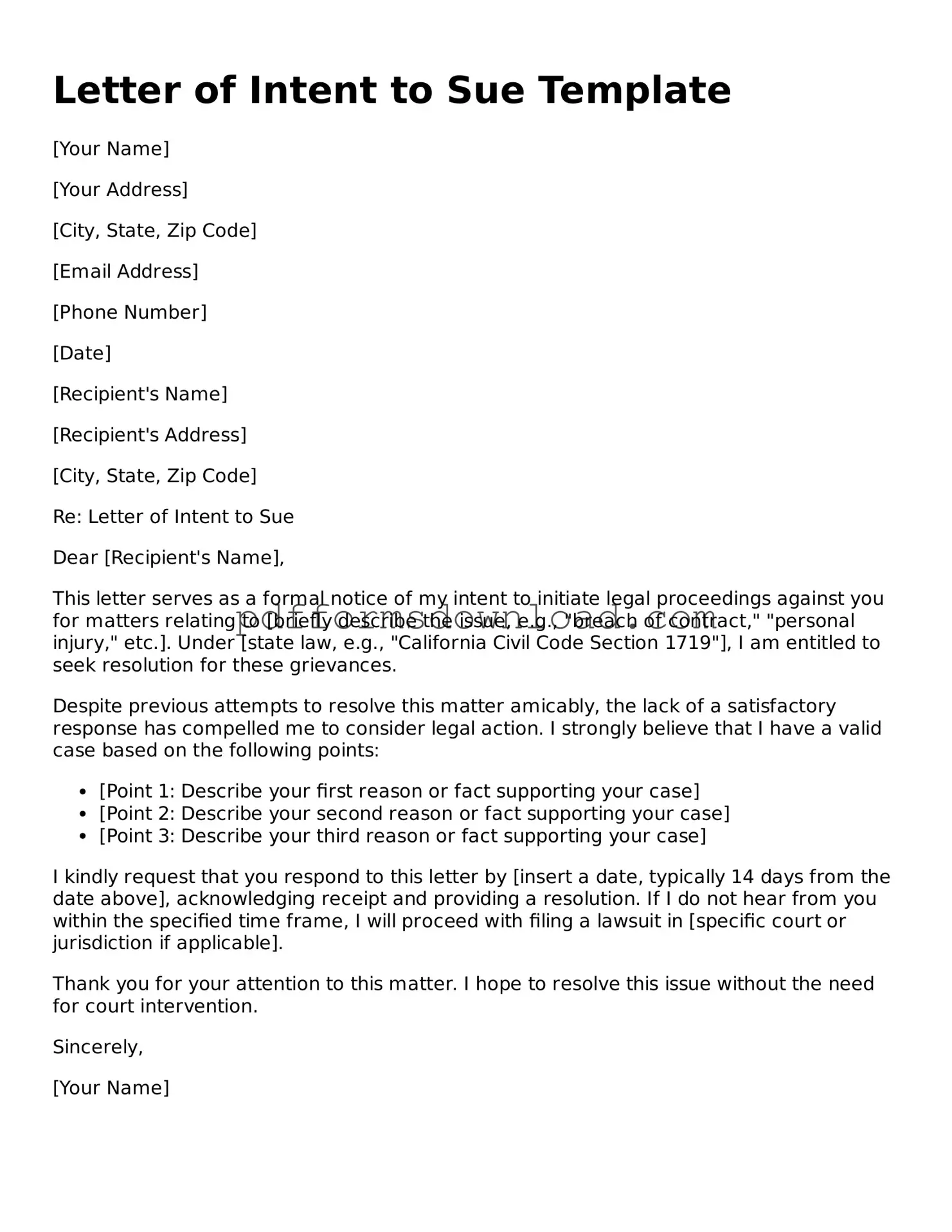What is a Letter of Intent to Sue?
A Letter of Intent to Sue is a formal document that notifies another party of your intention to file a lawsuit against them. This letter outlines the reasons for the potential lawsuit, the damages you seek, and gives the recipient an opportunity to resolve the issue before legal action is taken.
When should I send a Letter of Intent to Sue?
Consider sending this letter when you have a legal dispute that you believe cannot be resolved through informal negotiation. It serves as a last attempt to settle the matter without going to court. This letter can be particularly useful when you want to establish a record of your attempts to resolve the issue amicably.
What should be included in the Letter of Intent to Sue?
Your letter should clearly state the facts of the case, the legal basis for your claim, and the specific damages you are seeking. Additionally, include a deadline for the recipient to respond or take action. This timeframe encourages a prompt resolution and shows that you are serious about your intentions.
Is a Letter of Intent to Sue legally binding?
No, a Letter of Intent to Sue is not a legally binding document. It does not initiate a lawsuit but serves as a warning that you may pursue legal action if the issue is not resolved. However, it can be used as evidence of your attempts to settle the matter if the case goes to court.
How does sending a Letter of Intent to Sue affect my case?
Sending this letter can positively impact your case by demonstrating that you attempted to resolve the dispute before resorting to litigation. Courts often look favorably on parties that have made reasonable efforts to settle issues outside of court. It may also prompt the other party to take your concerns seriously and engage in negotiations.
Can I send a Letter of Intent to Sue without a lawyer?
Yes, you can draft and send a Letter of Intent to Sue without legal representation. However, consulting with a lawyer is advisable to ensure that your letter is clear, accurate, and legally sound. An attorney can help you articulate your claims effectively and increase the chances of a favorable outcome.
What happens if I do not receive a response to my Letter of Intent to Sue?
If you do not receive a response, you may proceed with filing a lawsuit. Keep a copy of the letter and any correspondence for your records. If you decide to move forward, having documented your attempts to resolve the matter can be beneficial in court.
